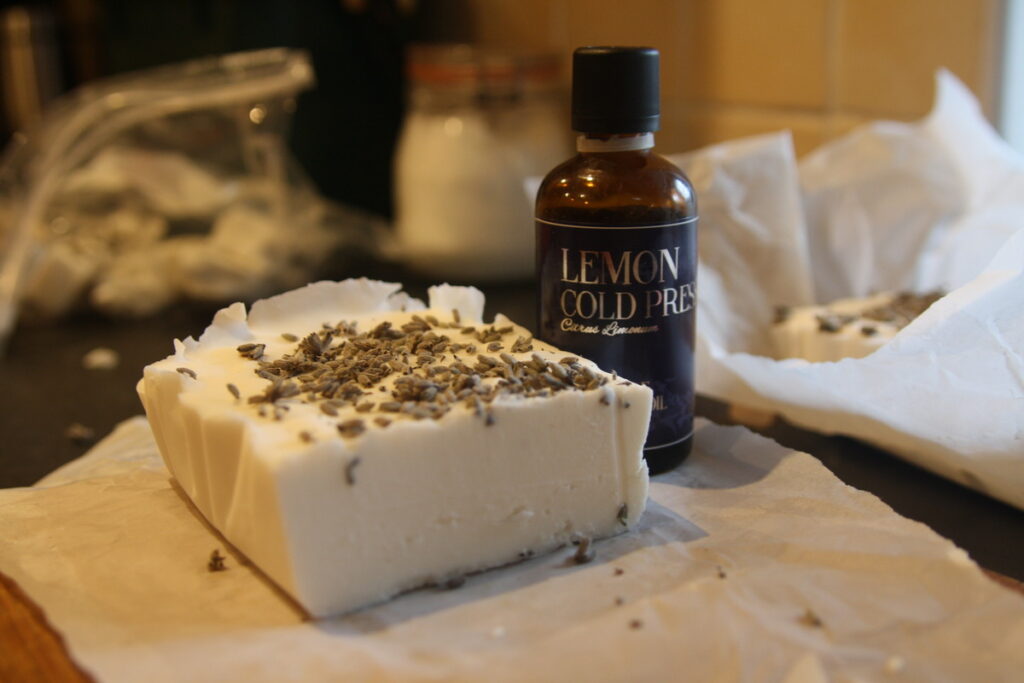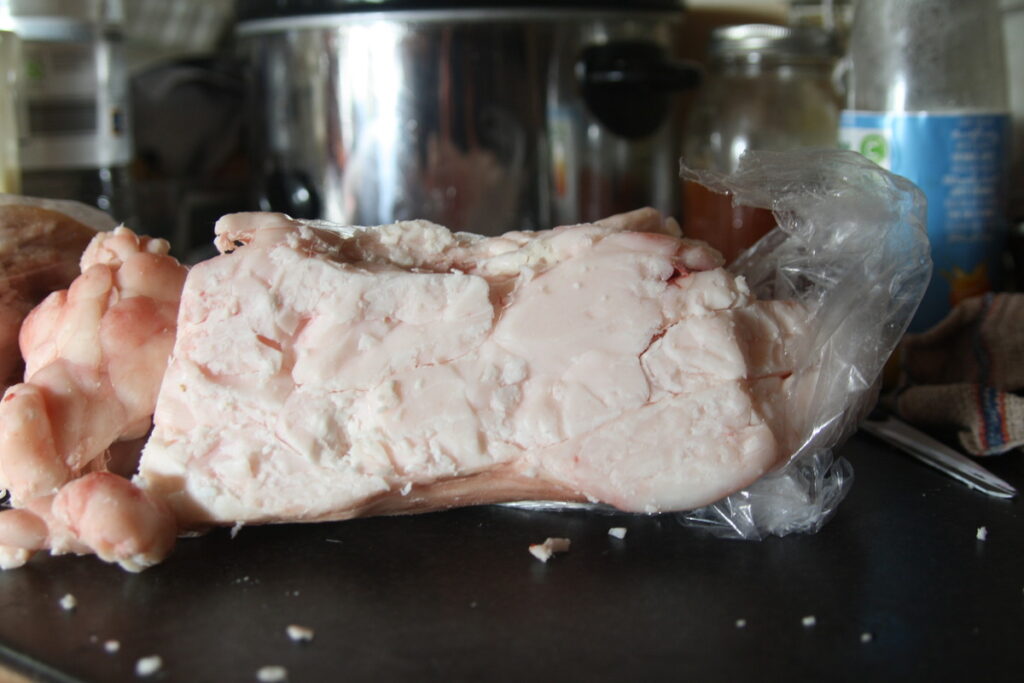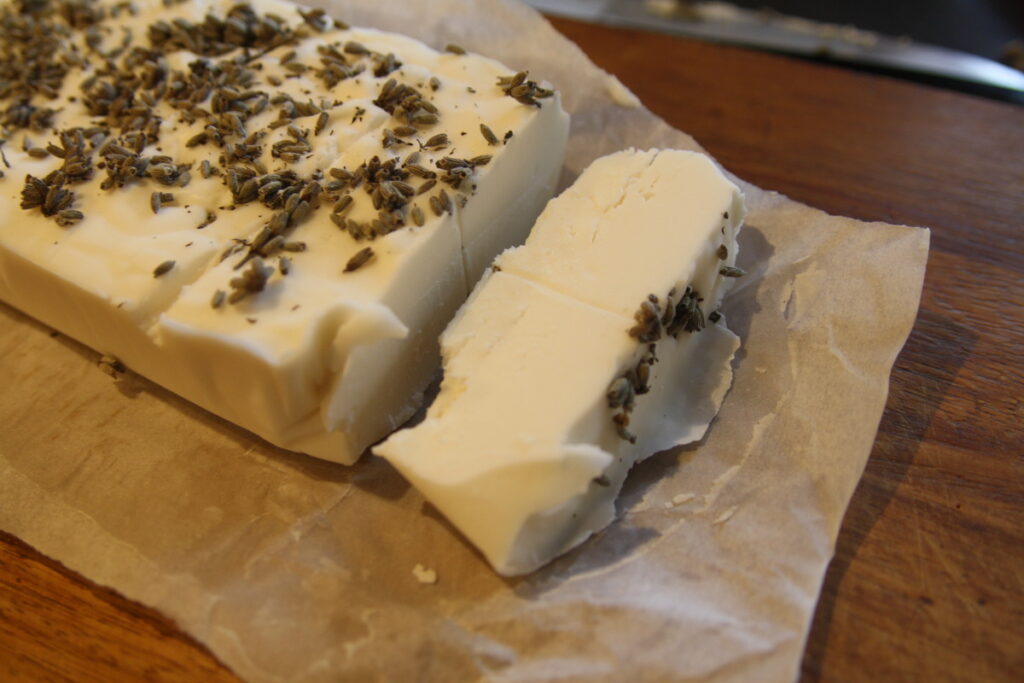If you would love to try making soap as a gift or a lovely natural product for your home, this post will get you started with a simple soap recipe! I hope you love soap making as much as I do.

The Basics for Simple Soap Recipe
A simple soap recipe for beginners needs to start by explaining a few basic things you will need to know:
- You need digital scales and a digital thermometer for accuracy of your measurements. These are both affordable to buy online.
- You need to wear rubber gloves and safety goggles when handling the ingredients. This is because of handling sodium hydroxide crystals, which you can buy online.
- You can really make this your own by using the kinds of fats you want and the essential oil fragrances you love.
The Fats
My simple soap recipe for beginners allows you to experiment with different ingredients that you love. The picture below shows the beef fat that I use to make tallow. This is a cheap and valuable ingredient for soap making, Coconut oil, shea butter, and olive oil are other popular ingredients.

The Saponification Process
Saponification sounds scary, but it is simply the chemical process which turns the fats into soap. This is done using sodium hydroxide crystals or lye. You need to measure precisely and wear safety equipment for this process.
Simple Soap Recipe for Beginners

The first step involves starting with this amazing lye calculator:
https://www.brambleberry.com/calculator?calcType=lye
Using this site you can put in the amount of fats you are using and it works out how much lye you need to use in your recipe. This means that you can easily adjust the quantities from my recipe if you like.
Here are my ingredients:
700g beef tallow
250g coconut oil
135.4g sodium hydroxide crystals/lye
303g spring water (not tap water)
1 tb spoon lemon essential oil
A handful of lavender flowers to sprinkle
Making the Soap
1.Firstly, heat your fats gently in a pan until melted.
2. This is the bit which requires your gloves and safety goggles. Add your sodium hydroxide and water to a heat proof bowl and stir until dissolved. Make sure you are either outside or near an open window for this process. It will heat up very quickly so be careful if you have little children around.
3. When the fats have cooled down to 37 degrees C mix in your lye. Using an immersion blender/stick blender start to blend your soap. When it is ready to be poured you will notice that it has thickened so that if you let the stick blender drip into the soap the drips will leave a little puddle mark on the surface.
4. Now stir in your essential oils. You need about a tablespoon. I use lemon.
5. I pour my soap into loaf tins lined with greaseproof paper. You can use all kinds of soap moulds if you prefer to buy these. Then I sprinkle the soap with lavender flowers.
5. Leave to set for a day or so and then slice. I put the slices into ziplock bags and store in my airing cupboard. The soap needs to cure for 3-4 weeks to complete the saponification process.
Your finished soap would make a fantastic gift, and we also use this as our everyday soap in our bathrooms. I hope you enjoy this simple soap recipe for beginners as much as my family do.
If you would like to see more homemaking content, why not start here: